#Cicinnurus respublica
Explore tagged Tumblr posts
Text
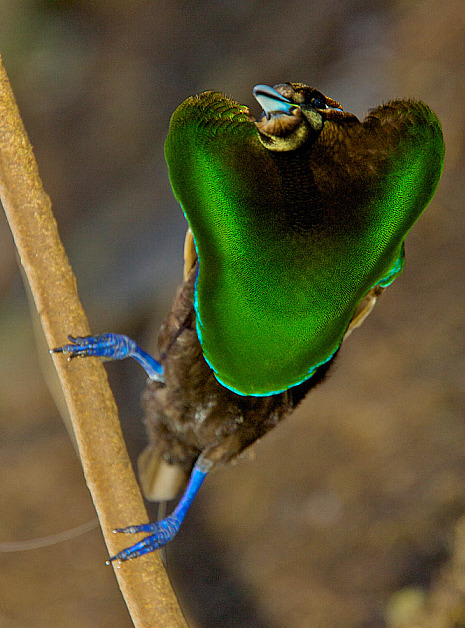

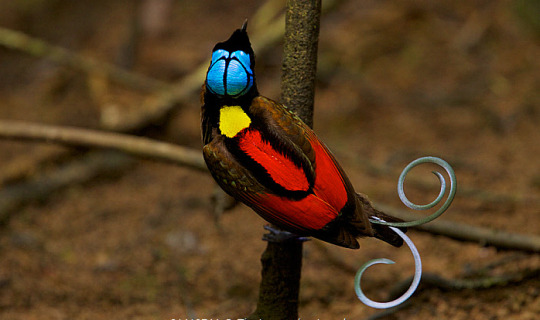
Birds of paradise by Tim Laman
Photo 1: Magnificent Bird of Paradise (Cicinnurus magnificus)
Photo 2: Red Bird of Paradise (Paradisaea rubra)
Photo 3: Wilson's Bird of Paradise (Cicinnurus respublica)
#birds#birds of paradise#colorful birds#bird of paradise#cicinnurus#cicinnurus magnificus#cicinnurus respublica#paradisaea#paradisaea rubra#magnificent bird of paradise#red bird of paradise#wilson's bird of paradise#animals#wildlife#tropical birds#green#red#nature
144 notes
·
View notes
Note
🥚 <3

Wilson's Bird-of-Paradise!
(Cicinnurus respublica)
64 notes
·
View notes
Text

Wilson's Bird-of-paradise
#wilsons bird of paradise#bird of paradise#Cicinnurus respublica#Passeriformes#Paradisaeidae#Cicinnurus#bird#upl
52 notes
·
View notes
Text

Wilson's bird of paradise (Cicinnurus respublica) sitting on berry bush close up.
(Image credit: Getty Images)
#getty images#photographer#wilson's bird of paradise#bird photography#cicinnurus respublica#nature#berry bush#animal
15 notes
·
View notes
Note
I wanna see some birds of paradise
Of course you do my pet, of course you do...
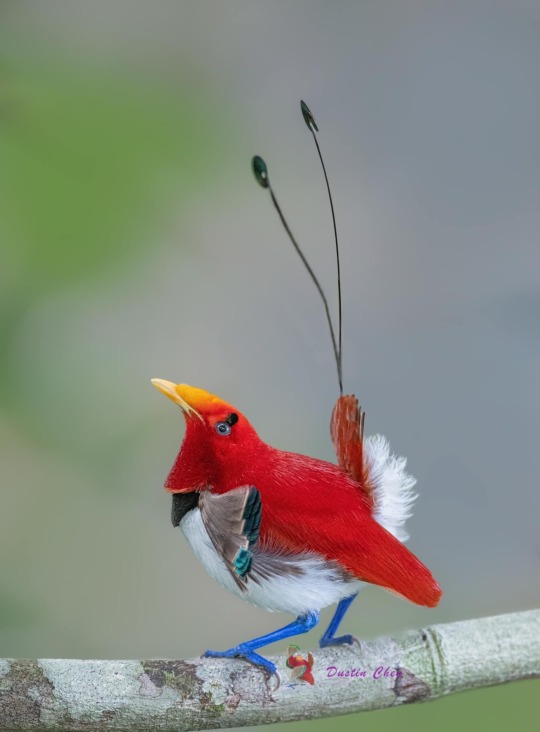
King Bird-of-Paradise (Cicinnurus regius), male, family Paradisaeidae, order Passeriformes, Aru Islands
Photograph by Dustin Chen

Greater Bird of Paradise (Paradisaea apoda), male, family Paradisaeidae, endemic to western New Guinea
photograph by @dustinchen0728

Wilson’s Bird-of-Paradise (Cicinnurus respublica), male, family Paradisaeidae, found in rainforests of Waigeo and Batanta Islands off West Papua
photograph by @dustinchen0728
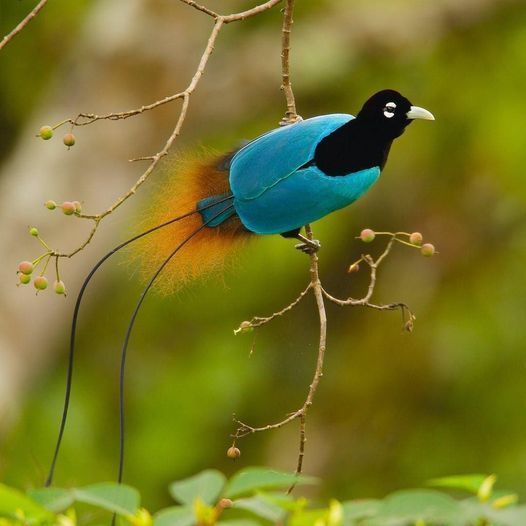
Blue Bird-of-Paradise (Paradisornis rudolphi), male, family Paradisaeidae, found in NE New Guinea
photograph by Tim Laman/Australian Museum
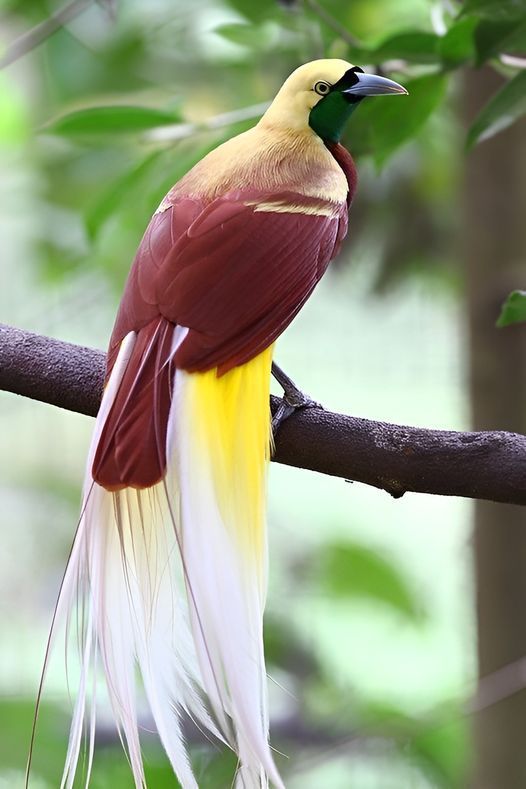
Lesser Bird-of-Paradise (Paradisaea minor), male, family Paradisaeidae, order Passeriformes, found in northern New Guinea
photograph by eddy lee

Growling or Eastern Riflebird (Ptiloris intercedens), male, family Paradisaeidae, far eastern New Guinea
Photograph by thetravellingnaturalist

Western or Arfak Parotia (Parotia sefilata), male, family Paradisaeidae, order Passeriformes, West Papua
photograph by Anjali Bhagwat
583 notes
·
View notes
Photo
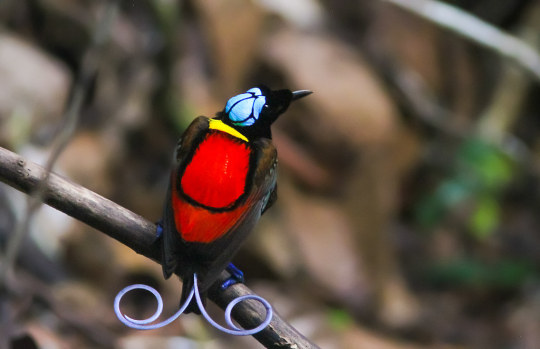
Wilson's Bird-of-paradise (Cicinnurus respublica)
© Wade Strickland
107 notes
·
View notes
Photo
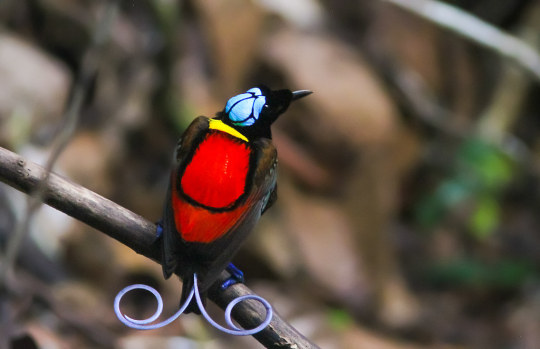
Wilson's Bird-of-paradise (Cicinnurus respublica)
© Wade Strickland
35 notes
·
View notes
Text

Day 7, "Enchanted" - Wilson's Bird-of-paradise (Cicinnurus respublica)
Birds of paradise have always enchanted me.
#inktober#inktober2019#Wilson's bird-of-paradise#Cicinnurus respublica#my art#birds#bird of paradise
8 notes
·
View notes
Text

Cendrawasih botak atau dalam nama ilmiahnya Cicinnurus respublica adalah sejenis burung pengicau berukuran kecil, dengan panjang sekitar 21 cm long, dari marga Cicinnurus.
0 notes
Photo



Secret bird of paradise dating dance revealed
Decorated with the most extravagant plumes and feathers of any group of animals on Earth, the birds of paradise and their vibrant courtship dances have captivated scientists and explorers for more than 500 years.
David Attenborough is a huge fan, and so it was no surprise that this family of birds were offered a starring role in his new series Planet Earth II. But what might be surprising, is that for centuries we have been viewing a number of their performances from entirely the wrong angle, and in doing so, have been missing half the show.
The Wilson’s bird of paradise (Cicinnurus respublica) is a particularly beautiful example of this highly embellished family. Approximately the size of a starling, the male is dressed in an elaborate cape of vermillion, with a turquoise skull cap.
Like many birds of paradise, he performs his vivid and complex dance entirely for the benefit of the female, who, incidentally, is a dull shade of brown. But, crucially, she sits and critiques his concert from an elevated position, directly above him.
So what does she see?
Ed Scholes and Tim Laman, from the Cornell Lab of Ornithology, have spent over ten years criss-crossing New Guinea watching and filming every species of bird of paradise. They suspected that the female Wilson’s was enjoying a ‘secret’ performance that no one had ever seen.
Together with the Planet Earth II team, they set out to film the Wilson’s dance from the female’s viewpoint, something that had never before been attempted.
“The females are the ones who decide who gets to pass their genes on to the next generation, and they have a pretty strong consensus, in that only a handful of males mate with most females," explains Ed Scholes.
“We look at a male bird of paradise, and we realise he’s astonishingly beautiful, and marvel at his feathers, but really the only thing that matters is what the females are seeing.
"So if we don’t try to appreciate these qualities from the perspective of the female birds of paradise, we are sort of missing the boat.”
Missing the boat, is a rather generous understatement as it turns out, since when viewed from above, the Wilson’s bird of paradise doesn’t resemble a bird at all, rather a bright and shining green disc, which flashes and shimmers in the gloom of the forest floor.
“Even though I had an idea of what to expect, I was really surprised at how different it looked. I thought: 'Oh, wow! This is going to be good!',” he laughs.
This never before seen angle was beautifully captured by the team for the Jungles episode of Planet Earth II, but Ed is keen to stress there is much more to admire than the large emerald breast shield, which viewers won’t fail to miss.
“There are lots of smaller details in the dance, which if you’re watching as a scientist, are equally astonishing. The inside of his mouth is an incredibly bright ornament, and when he gapes, the female is essentially looking straight down his throat.”
It’s hard to believe that we have been unwittingly admiring this dance for decades from the stalls, when all along the view from the dress circle was not only better, but a different show entirely. So are there other species of birds of paradise whose dances we’ve been judging from the wrong seats? Ed certainly thinks so.
“We have to consider what we’re seeing, and what the female is seeing, and there are definitely a handful of other species where we haven’t seen the full story yet.”
Photographs:
Male Wilson's bird of paradise displays to female from a small sapling, Papua New Guinea
Wilson's bird of paradise male on a display pole in the centre of his court, Papua New Guinea
Wilson's bird of paradise flaunts a magnificent emerald display
#bird of paradise#wilson's bird of paradise#jungles#planet earth ii#bbc#bbc earth#birds#animals#science#ornithology#stbm#ed scholes#tim laman#cornell lab of ornithology#courtship dances#courtship#mating#cicinnurus respublica#africa#papua new guinea
1 note
·
View note
Video
Wilson's Bird of Paradise-Cicinnurus respublica On Batanta island by Bram Demeulemeester
0 notes
Photo

Wilson's Bird-of-paradise (Cicinnurus respublica) male courting at display site, Waigeo, Indonesia
Photographer: Ch'ien Lee

#ch'ien lee#photographer#wilsons bird-of-paradise#bird#cicinnurus respublica#waigeo#indonesia#nature
8 notes
·
View notes
Text

Wilson’s Bird-of-Paradise (Cicinnurus respublica), male, family Paradisaeidae, order Passeriformes, found in rainforests of Waigeo and Batanta Islands off West Papua
photograph by Paul Varney
933 notes
·
View notes
Text
Birds, Bonapartes, Biological Nomenclature
The more that I learn about the Bonaparte clan, the more I realize that the family most famous for Napoleon I, the emperor and military genius, had connections to basically everything in the 1700s and 1800s. One shocking connection to me was that Tarrare (that hungry guy during the French Revolution who ate basically everything) worked under Alexandre de Beauharnais, who was married to a woman known as Rose Tascher de La Pagerie. After Alexandre de Beauharnais perished during the Reign of Terror, Rose remarried to a young general named Napoleon Bonaparte and adopted the name of Josephine.

Pictured above: the curl-crested aracari, photographed by Lonnie Huffman
Just as I never expected the Bonaparte clan to have a connection to the infamous hungry guy, I also never expected them to have a real impact on ornithology. It seems so out there, so disconnected from the politics and conquest that are usually associated with their name. While reading about birds in the past, I’ve frequently stumbled upon the name “Bonaparte” or “Beauharnais” (Josephine’s martial name by her first husband, and the last name of both of her children, who became instrumental in Napoleon’s securing of power throughout Europe)[1]. I always assumed that the names simply came from people wanting to honor monarchs that hailed from the Bonaparte-Beauharnais clan, as naming new species (well, new to western scientists) after monarchs was trendy during that time. One such example is the curl-crested aracari, whose scientific name is “pteroglossus beauharnaesii.” I mention this specific example because the curl-crested aracari is awesome and vastly underrated compared to better-known species in the Ramphastidae family, such as toco toucans.
I recently learned, however, that the Bonaparte family’s influence on ornithology is more than just symbolic! I decided to dig a little bit deeper into learning why the name “Bonaparte” appears so frequently in bird information, and I found out that Napoleon’s nephew and the son of his brother Lucien, Charles Lucien Bonaparte was a prominent ornithologist who was the authority on 165 genera, 203 species, and 262 subspecies. Learning about this was really cool for me because two of my primary passions in life are Napoleon and birding, and I find it really exciting that there’s this unexpected and kind of random intersection of the two.
According to the IOC World Bird List, among the species studied by Bonaparte are a subspecies of oriental turtle dove of Europe and Asia (Streptopelia orientalis erythrocephala), the blue-winged goose (Cyanochen cyanoptera) endemic to Ethiopia, and the Pel’s fishing owl (Scotopelia peli) endemic to Africa.

Pictured above: the blue-winged goose, photographed by Dick Daniels
Among Bonaparte’s notable contributions to ornithology is also his naming of the New World dove genus, Zenaida, after his wife. Bonaparte married Zénaïde Bonaparte, who was his cousin and the daughter of Joseph Bonaparte, older brother of Napoleon and Lucien Bonaparte. This was incestuous and nasty, but what can you really expect from European nobility? The Zenaida genus notably includes the Zenaida dove (the type species) and the mourning dove. Mourning doves are common where I live, and from now on, whenever I hear its iconic call of “hoo hoo hoo,” I’ll think of the Bonaparte family.

Pictured above: The mourning dove. “Dove by Almaden Lake” by Don Debold
Bonaparte also was an early supporter of John James Audubon, who was then relatively unknown as a naturalist. I would also like to note that Audubon grew up in France[2], and used a fake passport to flee to the United States so that he wouldn’t be conscripted into the Napoleonic Wars. (I can only imagine what Bonaparte must have said if/when Audubon told him, “Yeah, I came to this country as a draft dodger because I didn’t want to die in all those wars that your uncle keeps dragging us into.”) Bonaparte recommended him for the Academy of Natural Sciences of Philadelphia (now a part of Drexel University) while living in Philadelphia, where he and his wife moved after getting married so that they could be with Joseph Bonaparte, who lived in exile in the city. Unfortunately, Audubon’s bid for membership because George Ord, an ornithologist and member of the academy, disliked his style of painting. Well, George Ord isn’t the one amongst them who has become basically synonymous with ornithology and bird conservation in the United States, so evidently, Audubon got the last laugh.
On a slightly different note, a fascinating aspect of biological nomenclature that I had never considered before learning about Bonaparte was the frequency at which people named species after their own political leaders, like the afore mentioned curl-crested aracari. Now that royalty and monarchies aren’t nearly as relevant to most people’s lives as they were during the time of the Bonapartes, the trend has evolved so that people name species to honor celebrities and other pop culture icons. (Though, whereas before famous people had birds named after them, now discovery of a terrestrial vertebrate animal is uncommon enough that people only get bugs and worms unless they’re lucky.) Take, for example, Aleiodes shakirae, Aleiodes gaga, and Aleiodes colberti, wasps that are named after Shakira, Lady Gaga, and Stephen Colbert, respectively. There’s even a whole Wikipedia page dedicated to listing the creatures whose scientific names take after the Harry Potter series. (There’s a whole dinosaur named Dracorex hogwartsia, which translates to “dragon king of Hogwarts”! I’m jealous! … Also, read another book, smh.)
Anyway, anyone who complains that people are making everything political these days clearly hasn’t read their history. One of Bonaparte’s notable contributions to ornithological nomenclature was his naming of Wilson’s bird-of-paradise, whose colloquial name comes from Alexander Wilson, a prominent American ornithologist who laid the foundation for ornithology in the United States. The scientific name for Wilson’s bird-of-paradise is “cicinnurus respublica,” with respublica commonly being translated as “public affair” or “commonwealth.” Bonaparte wanted to deviate from the tradition of naming species after royalty and royalty-adjacent people, and instead honor the concept of the republic. In my opinion, this is disdain for royalty was entirely performative, given that Bonaparte was a descendant of an imperial dynasty, was a prince himself, and was afforded his privilege in life by the fact that his uncle seized power in France, installed himself as the country’s leader, and eventually crowned himself emperor.
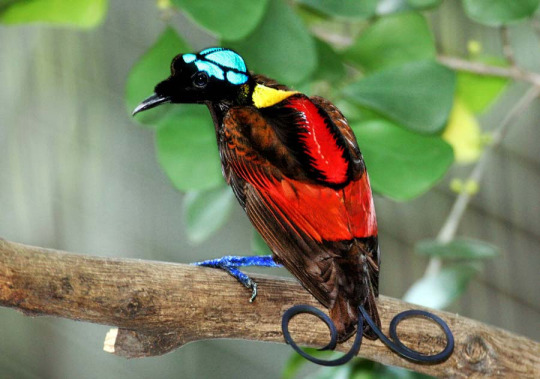
Pictured above: Wilson’s bird-of-paradise, photographed by Serhan Oksay
I’m always taken aback when I learn about just how connected the world was [for wealthy white men] before modern technology, and the influences that people from completely different geographical backgrounds could have on each other. It is important to acknowledge that so many of the naturalists from this time period were able to make such developments in their fields not because of their intrinsic talent as biologists and ornithologists, but also because of their immense connections and lucky circumstances that paved their way to success. Also, the “discovery” of many New World avian species wasn’t true “discovery” at all, because the indigenous people of the Americas had lived with those species for millennia. It was only “discovery” for westerners, who placed their mark of colonization on those species by naming them after rulers and other prominent western figures.
Although Bonaparte definitely had the passion to contribute so much to ornithology, he came from an incredibly powerful political dynasty that could bankroll his studies. He could travel wherever he wanted to and obtain any specimen that he wanted to obtain because of who his family was. Similarly, although Audubon certainly had a passion for birds and talent as an illustrator, he was only able to develop those skills through meeting the right people and having the generational wealth to do whatever he wanted in life. That’s not to say that every single ornithologist came from a position of wealth and power — the aforementioned Wilson, for example, was a weaver who lived in poverty in Scotland before emigrating to the United States and working as a schoolteacher. I don’t think that that makes the contributions of people like Bonaparte and Audubon less important or meaningful to the field (I’m also not an ornithologist so I don’t have that authority), but, as with most fields even today, it’s worth thinking about that the people who made these contributions reflect only the people with the access to the most resources.
NOTES: [1] Although Josephine is frequently referred to as “Josephine de Beauharnais,” she never actually went by that name during her lifetime. When she was married to Alexandre de Beauharnais, she went by Rose, and only adopted “Josephine” after having married Napoleon, because he liked the nickname. [2] Audubon was born in Haiti, where his father owned a plantation that he sold in 1789 when tensions began to rise between white slave-owning colonizers and enslaved people of African ancestry. The elder Audubon had a number of mixed-race children by a mistress who had ¼ African ancestry, but only the younger Audubon and his sister, who were both considered white, were moved to France alongside him.
7 notes
·
View notes
Photo

The Wilson's bird-of-paradise (Cicinnurus respublica). Endemic to the hill and lowland rainforests of Waigeo and Batanta Islands off West Papua. http://bit.ly/2E29A0E
Hey Tumblr! Are you tired of the cold of the winter? Are you counting down the days till your next vacation? We can make your next vacation better than ever!
If you love traveling, check out these two helpful links!
Globe Trotter Guides - Our helpful and informative travel blog
Win a free all expense paid trip for 2 via TourRadar - FREE ENTRY FOR ALL!
43 notes
·
View notes
Photo

Wilson's bird-of-paradise (Cicinnurus respublica)
63 notes
·
View notes